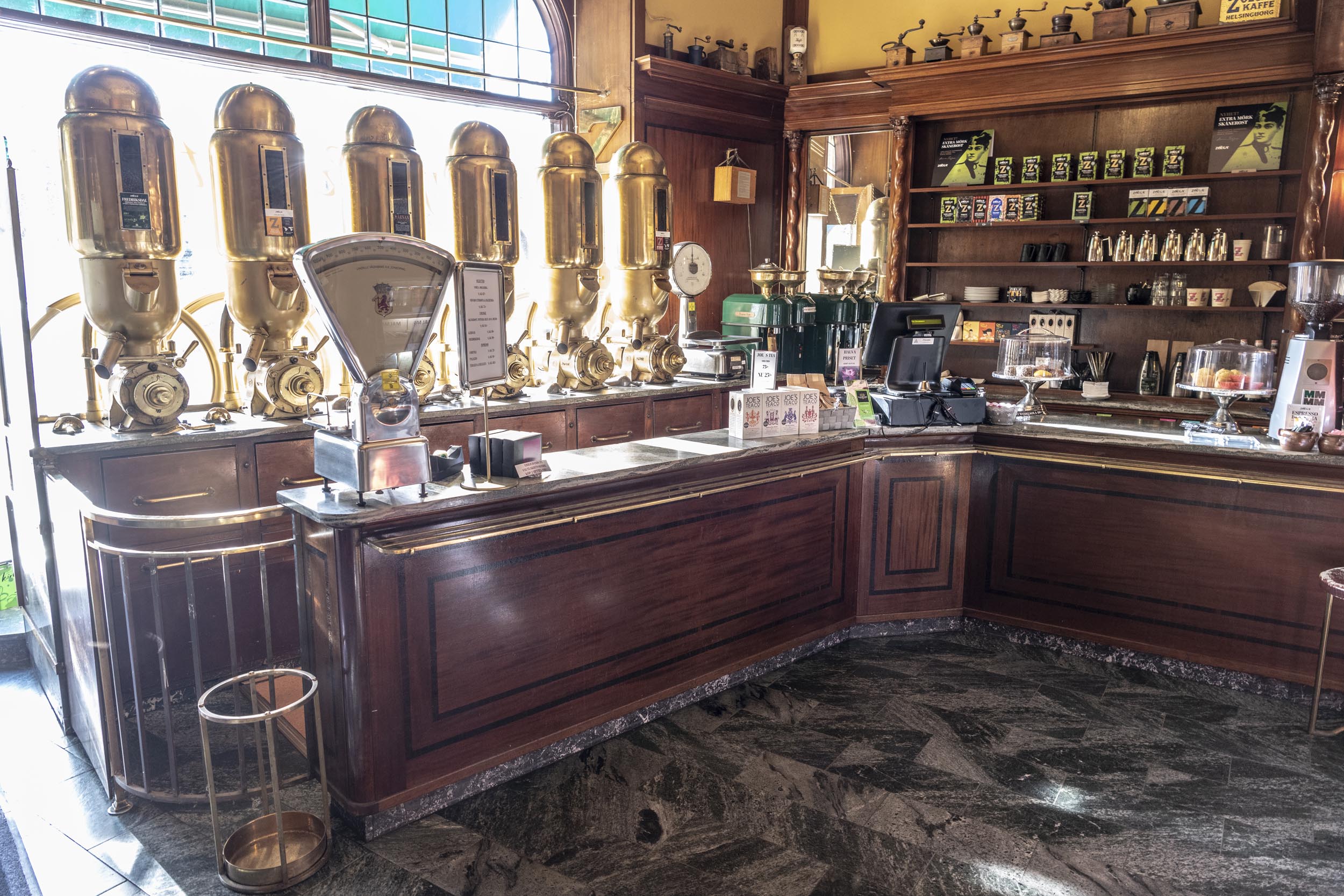ZOÉGAS COFFEE SHOP
A DAMN FINE CUP OF COFFEE IN HELSINGBORG, SWEDEN
About twenty times a year I visit the Swedish city Helsingborg. Why? Because I live relatively close to Helsingborg compared to when I lived in Copenhagen. And I really like the city. And it is an easy and quick way to visit another country.
The Danish city of Helsingør lies approx. 40 km north of Copenhagen. From Helsingør the ferries to Sweden sail every 20 minutes. The 4 km crossing only takes 20 minutes and it costs approx. 69 Dkr. (€9, or $11) if you walk or go by bike. The price is around 300 Dkr. if you go by car.
The distance between the Danish city Helsingør and the Swedish city of Helsingborg is only 4 km
Helsingborg is a small city, around 110.000 citizens. It is the 8. biggest city in Sweden. But I’m not getting a feeling of a small city, when I visit. Helsingborg feels like a bigger city than it is.
I love going to coffee shops and just sitting and listening.
Julia Roberts
The other day on my way home to Denmark I was tempted to enter a small coffee shop on 30 Drottninggatan. I have previously heard the name Zoégas in connection with Helsingborg and coffee. And I like coffee, so I gave myself time for a short visit. The waitress gave me permission to take some pictures of the historical shop from 1903.
I had a lovely cup of coffee and a lemon cake. The coffee tasted much better than the cake I have to say. The cake was nothing to write home about. The coffee had no bitterness, Just a round taste of coffee. One of the best cups I ever tasted. And the prices are very reasonable. Only around 40 Skr. for a cup of coffee and a cake (40 SEK = 29 Dkr = €4 = $4,5).
While I was enjoying my coffee at the sidewalk outside the shop I read about the story behind what has now become the coffee empire Zoégas.
Already in 1881 Carlos Zoéga opened a coffee shop in Landskrona after living in Brazil, among other countries. In 1886 he moved the company to a store on Kullagatan 27 in Helsingborg, where the family both had their place of residence and their coffee shop, then called Helsingborgs Patent-Kaffe-Ångbränneri. After Carlos Zoega's death in 1888, the wife Maria took over the shop and around the turn of the century moved to new premises on 30 Drottninggatan, where the company still operates the shop I visited.
“He was my cream, and I was his coffee
And when you poured us together, it was something”
Josephine Baker
Maria Zoéga married again a while after Carlos' death with grosser Johan Svensson, and together they got the son Rudolf. The whole family retained the surname Zoéga. Rudolf Zoéga started his career in the company in 1913, and took over when his father died in 1923. Rudolf became the one who developed the company into an industrial company. In 1952, the company moved to newly built premises on Ängelholmsvägen, which had one of the most modern coffee roasteries in the world. These buildings still contain Zoégas business. The company was transformed into a public limited company in 1958 and in 1986 the company was acquired by then Finnus, which is owned by Nestlé today.
I can’t say that I was trilled to read that Zoégas today is owned by the largest food company in the world. Nestlé has been involved in many controversial cases over the years. But when you visit the companys webpage it seems like the company tries to take responsibility and improve its image: https://www.nestle.com/stories#/category/featured-stories/1
They have many projects running. And they have many goals for the future, which will ensure greater sustainability. If Nestlé does it to improve it’s image because Nestlé thinks there's more profit in a social responsibility profile, or if the company is just good-hearted is maybe not so important.
According to Nestlé the company invests approximately SEK 3.7 billion in the period 2010-2020 in a more sustainable coffee growing. Specifically, the investment goes to the training of coffee farmers in responsible and productive cultivation as well as the distribution of new and more climate-resistant coffee plants. Since 2010, a total of 376500 coffee farmers have been trained. During the period 2010-2020, 220 million coffee plants will, according to Nestlé, also be distributed to coffee farmers worldwide. The plants are donated and are included in a education program for the farmers to ensure that the plants are grown best.
The coffee plants are planted on existing plantations and the farmers choose who they want to sell their coffee to. The plants are specially developed through natural plant processing to be resistant to climate change. Moreover, they are more resistant to disease.
“I have walked into the palaces of kings and queens
and into the houses of presidents. And much more.
But I could not walk into a hotel in America and get a cup of coffee,
and that made me mad.”
Josephine Baker
“Coffee by woman” in Kenya and and Rwanda was projects started by Zoegas where experts trained around 50 000 coffee farmers, of which at least 30% of the project's participants were women. The goal was to increase productivity by at least + 30% that meets the production of coffee according to Zoégas quality requirements. 100,000 young and healthy coffee plants was distributed among the farmers.
Together with Zoégas, blogger Paula Uribe visited Kenya to meet female coffee growers and learn more about the Coffee By Women sustainability project. In the film, Paula and Hugo meet the coffee growers Mary Wanja Njagi, Purity Muthoni and Hellen Kathugu Machere.
Together with ZOÉGAS, blogger Paula Uribe visited Kenya to meet female coffee growers and learn more about the Coffee By Women sustainability project. In the film, Paula and Hugo meet the coffee makers Mary Wanja Njagi, Purity Muthoni and Hellen Kathugu Machere. Video by ZOÉGAS.
Zoégas had a market share of 20 percent of Sweden's coffee sales in 2009 and more than 60 per cent of dark coffee.
“Should I kill myself,
or have a cup of coffee”
Albert Camus







